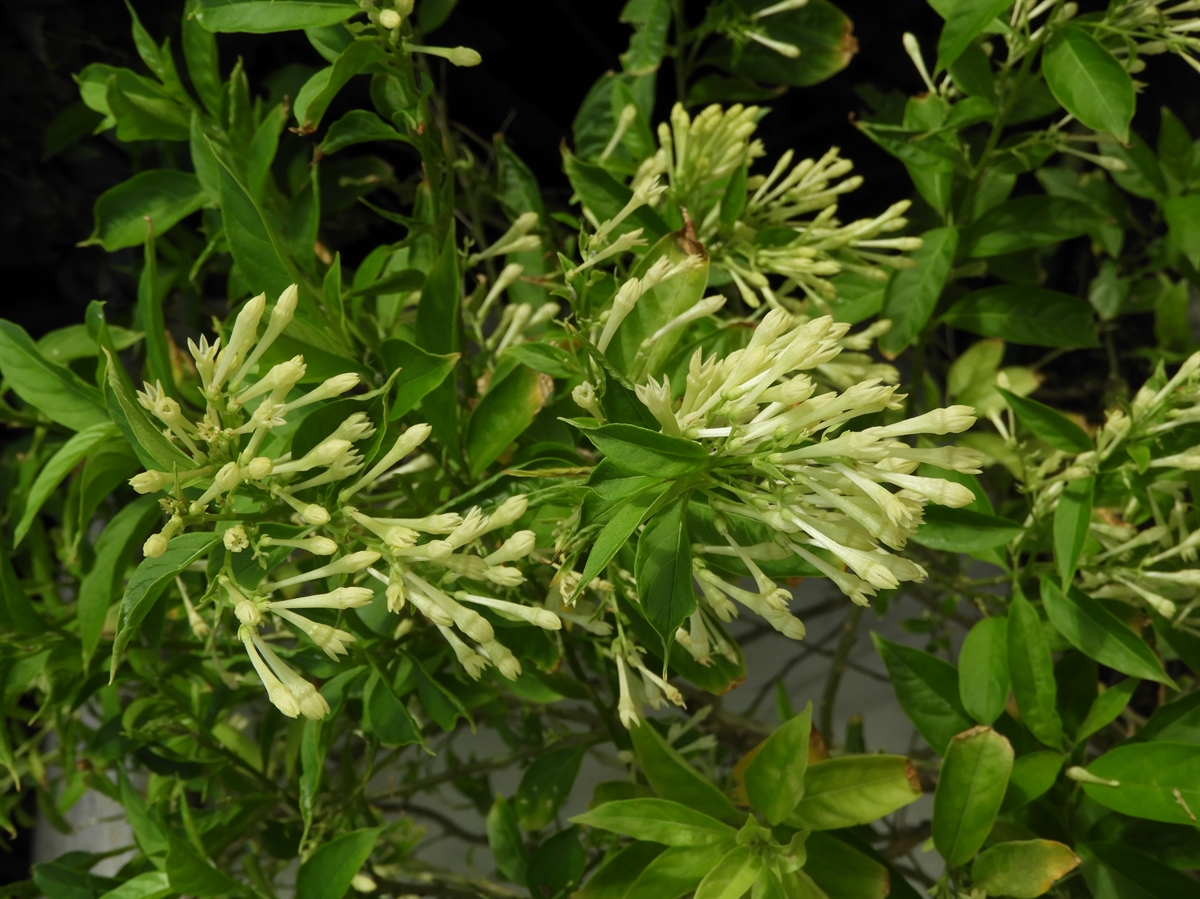Habit: Cestrum nocturnum grows as a shrub to 4 m in height. The leaves are arranged alternately, to 14 cm in length, elliptic to lanceolate, with an acute to acuminate leaf apex and an entire leaf margin. Young stems and leaves are sparsely pubescent and glandular.
The complete, perfect, actinomorphic, fragrant flowers are in terminal and axillary racemes and panicles. The calyx has 5 fused into a tube, greenish sepals. The corolla has 5 fused into an elongate tube, greenish yellow petals. There are 6 stamens with yellow anthers that are fused at the base to the corolla. The ovary is superior with 2 locules and numerous seeds. The fruit is a white berry at maturity.
Habitat: Cestrum nocturnum grows in Human Altered environments (yards and gardens)
Distribution: Cestrum nocturnum is NOT native to the Lucayan Archipelago but is grown on many islands. It is native to Mexico, Central and South America but is now grown worldwide.
Medicinal/Cultural/Economic usage: Cestrum nocturnum is not known to be used medicinally in the Lucayan Archipelago.
Cestrum nocturnum is used in the horticultural trade for its fragrant and showy flowers.
Some people can have a reaction to the strong scent causing respiratory distress and ingestion is known to cause fever like symptoms. It is NOT recommended to be ingested.
Other species of Cestrum are known to have toxic alkaloids.
